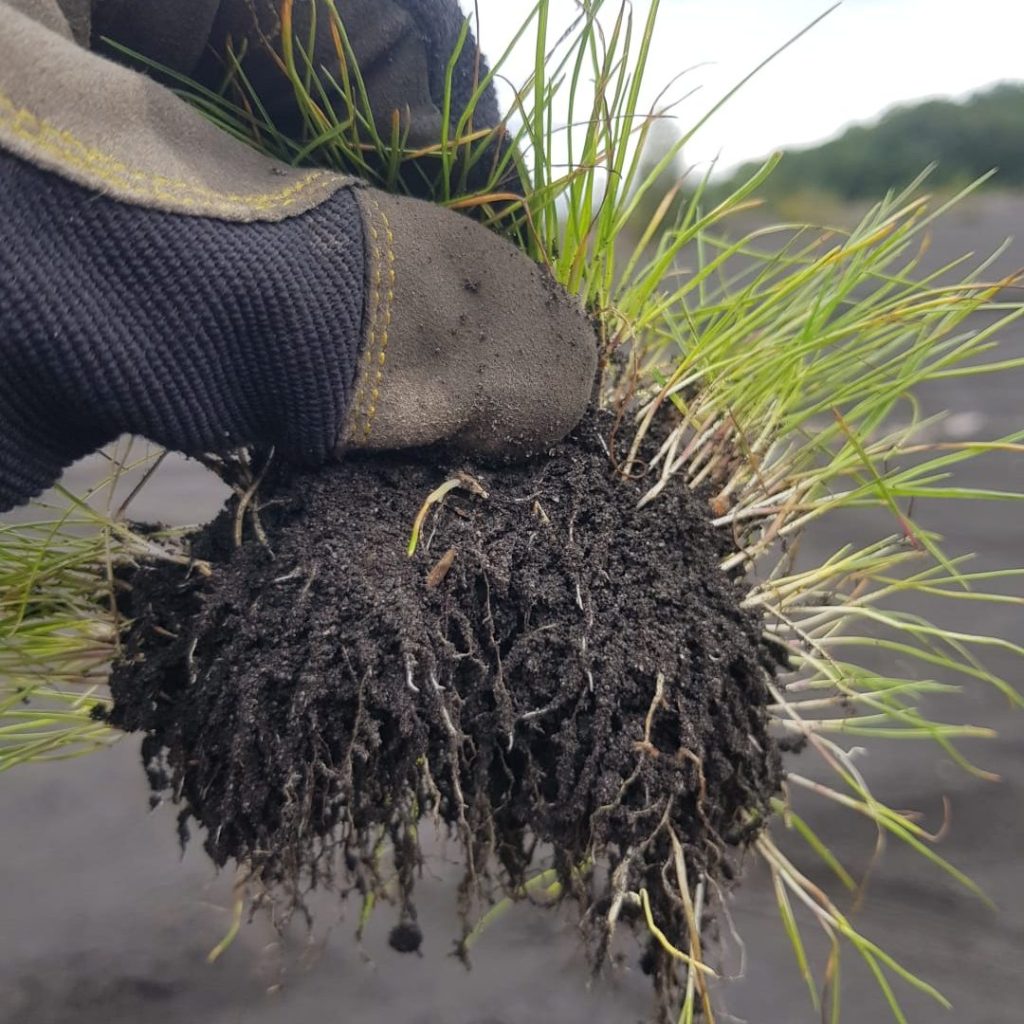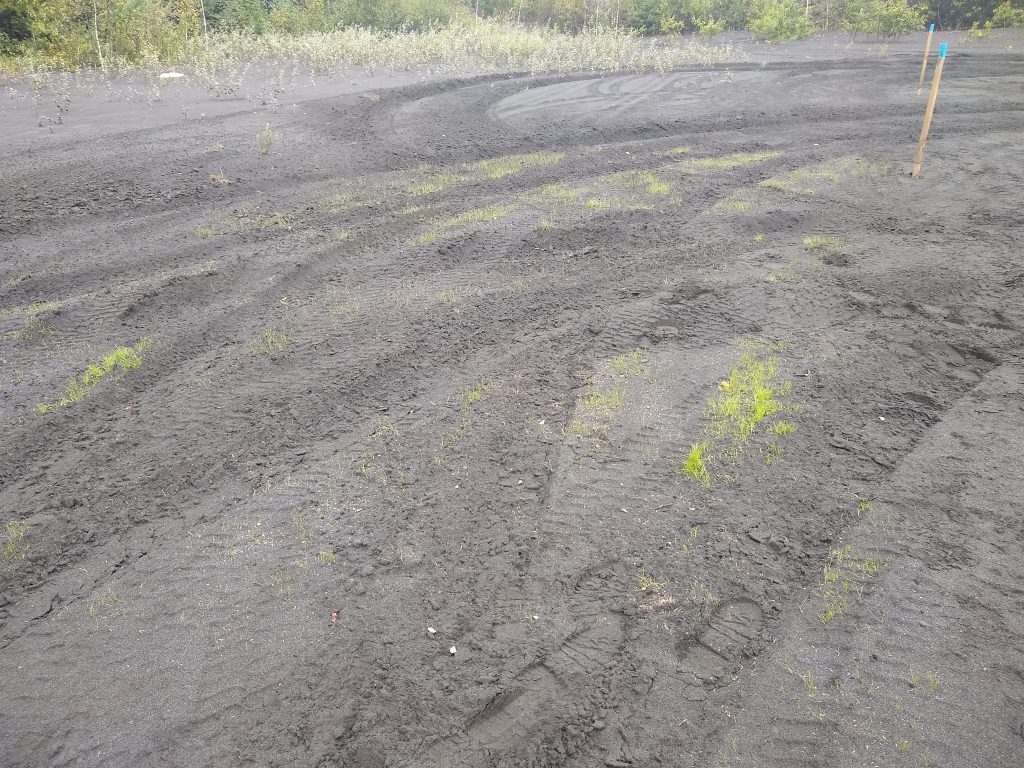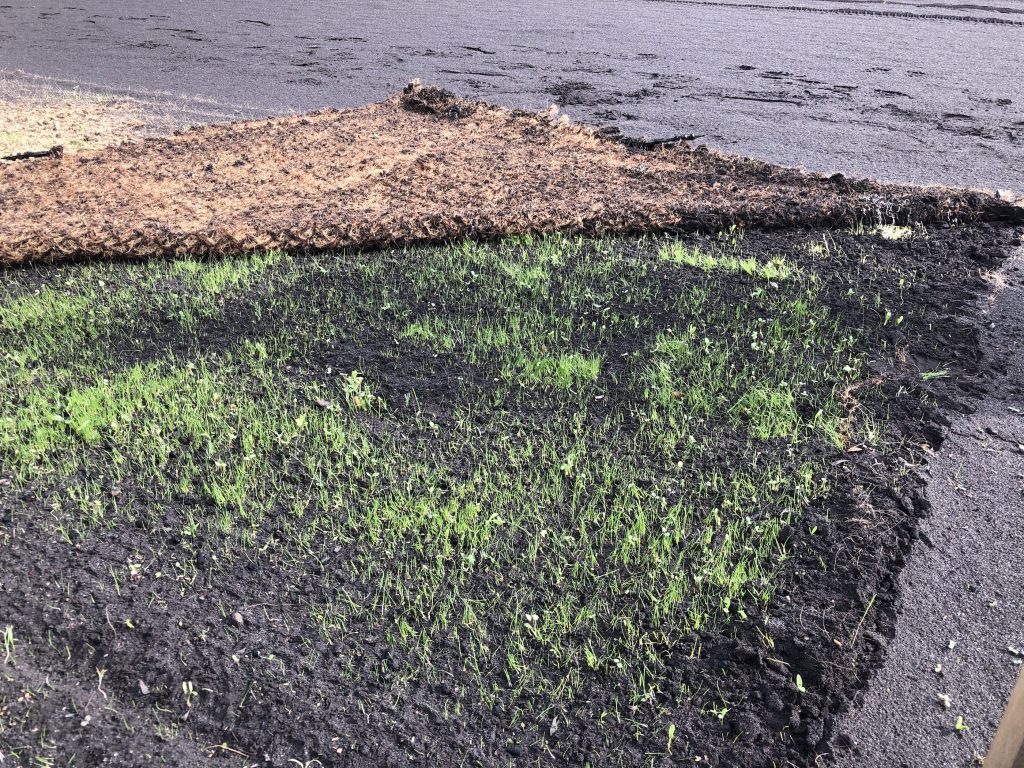
The Nižná Slaná landfill is located on the northeastern side of the village of Nižná Slaná in the hills directly above Etelka Huta, one of the most unique technical monuments in the Gemer region or perhaps in the entire country, representing the long and rich history of mining in that region. The landfill contains waste from ore processing in the region and, according to estimates, reached a volume of almost 5.5 million. m3. the retention wall itself is about 95 meters high. In the past, several experiments were conducted to determine whether it was possible to cover the area with vegetation. Our associates asked the mayor if they could test our humic acid formula on site to see if there would be any reaction. A month later, some very noticeable changes were observed.
Area: around 21 Ha (12.5 Ha – tailings pond)
Environmental burden: open unsecured landfill with a high concentration of toxins (As, Cd, Pb, Hg, etc..)
Goal: prevent the mobility of harmful dust by covering the entire site with vegetation
Experiment: application of HUMAC® Agro with grass grains on an area of approximately 16 m2 as a first test (August 7, 2020)
After one month (September 7), the area was covered with grass where HUMAC® Agro was applied.
Unfortunately, a large part of the test area was damaged by motorcycle riders. However, the following images show the extent of the grass’s root system.


Rich roots as long as above-ground grass, one month after application.
During this one month (August 07 – September 07) there were only 9 days when daily temperatures fell below 25 degrees and 13 days with precipitation
On September 7, two soil samples were taken:
- from a place without HUMAC treatment – control
- from the site treated with HUMAC
the samples were sent for analysis to the accredited VEHYDIS laboratory of the State Veterinary and Food Institute
The results
| Parameter | control | treated with HUMAC | difference |
|---|---|---|---|
| Mercury (Hg) | 2,35 mg/kg | 0,55 mg/kg | -76,6 % |
| Cadmium (Cd) | 0,27 mg/kg | 0,096 mg/kg | -64,0 % |
| Lead (Pb) | 44,98 mg/kg | 46,47 mg/kg | +3,3 % |
| Arsenic (As) | 1907 mg/kg | 542,5 mg/kg | -71,6 % |
When it comes to lead, it is one of the least reactive metals and the bonding time is much longer. In addition, humic acids are known for their ion-exchange capacity, forming ionic bonds with various metal ions.
We did not control for pH, which according to previous studies tends to determine the rate of binding, especially with lead.
We have set up another test and will continue to monitor the situation, but past tests from another area have also shown lead binding.

Unfortunately, over the course of the month the motorcycles destroyed most of the grass that was growing, so the extent of grass growth is not fully captured.

During the second visit, a second test was conducted using a protective net made of coconut fibers to prevent the wind from blowing away the applied seedling and humic acid mixture, as well as other wind control solutions.
At the beginning of October 2020 – grass was growing on the second test areas


